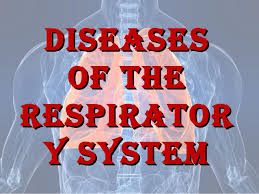- Home
- Medical news & Guidelines
- Anesthesiology
- Cardiology and CTVS
- Critical Care
- Dentistry
- Dermatology
- Diabetes and Endocrinology
- ENT
- Gastroenterology
- Medicine
- Nephrology
- Neurology
- Obstretics-Gynaecology
- Oncology
- Ophthalmology
- Orthopaedics
- Pediatrics-Neonatology
- Psychiatry
- Pulmonology
- Radiology
- Surgery
- Urology
- Laboratory Medicine
- Diet
- Nursing
- Paramedical
- Physiotherapy
- Health news
- Fact Check
- Bone Health Fact Check
- Brain Health Fact Check
- Cancer Related Fact Check
- Child Care Fact Check
- Dental and oral health fact check
- Diabetes and metabolic health fact check
- Diet and Nutrition Fact Check
- Eye and ENT Care Fact Check
- Fitness fact check
- Gut health fact check
- Heart health fact check
- Kidney health fact check
- Medical education fact check
- Men's health fact check
- Respiratory fact check
- Skin and hair care fact check
- Vaccine and Immunization fact check
- Women's health fact check
- AYUSH
- State News
- Andaman and Nicobar Islands
- Andhra Pradesh
- Arunachal Pradesh
- Assam
- Bihar
- Chandigarh
- Chattisgarh
- Dadra and Nagar Haveli
- Daman and Diu
- Delhi
- Goa
- Gujarat
- Haryana
- Himachal Pradesh
- Jammu & Kashmir
- Jharkhand
- Karnataka
- Kerala
- Ladakh
- Lakshadweep
- Madhya Pradesh
- Maharashtra
- Manipur
- Meghalaya
- Mizoram
- Nagaland
- Odisha
- Puducherry
- Punjab
- Rajasthan
- Sikkim
- Tamil Nadu
- Telangana
- Tripura
- Uttar Pradesh
- Uttrakhand
- West Bengal
- Medical Education
- Industry
3D mapping makes respiratory diseases treatment easy

London: In a first, a research team has succeeded in producing 3D images showing oxygenand carbon dioxide transport in the lungs, thus providing hope for better treatment of respiratory diseases.
"We are the first to develop a new model for how you can see into the lungs. The model provides a kind of 3D map of how and where the CO2 and oxygen transfers take place," said Troels Johansen, engineer and PhD student from the Department of Clinical Medicine at Aarhus University in Denmark.
Working in collaboration with researchers from Harvard Medical School, Johansen developed a mathematical model as part of his PhD project that provides the basis for the 3D images, which in turn are developed from Positron Emission Tomography (PET) scans.
A PET scan is a type of imaging test that uses a radioactive substance called a tracer to look for disease in the body.
"For example, if we take cancer patients with a tumour in the lung, it will be easier to predict the consequences of removing part of the lung by surgery," Johansen said.
He said the new model can be used for different groups of patients.
"It will also be easier for doctors to determine the Chronic Obstructive Pulmonary Disease (COPD) patients who will benefit from an operation and those who will not. We also believe that the new model will come to contribute with knowledge that can help patients in intensive care who are on a respirator," he added.
"We are the first to develop a new model for how you can see into the lungs. The model provides a kind of 3D map of how and where the CO2 and oxygen transfers take place," said Troels Johansen, engineer and PhD student from the Department of Clinical Medicine at Aarhus University in Denmark.
Working in collaboration with researchers from Harvard Medical School, Johansen developed a mathematical model as part of his PhD project that provides the basis for the 3D images, which in turn are developed from Positron Emission Tomography (PET) scans.
A PET scan is a type of imaging test that uses a radioactive substance called a tracer to look for disease in the body.
"For example, if we take cancer patients with a tumour in the lung, it will be easier to predict the consequences of removing part of the lung by surgery," Johansen said.
He said the new model can be used for different groups of patients.
"It will also be easier for doctors to determine the Chronic Obstructive Pulmonary Disease (COPD) patients who will benefit from an operation and those who will not. We also believe that the new model will come to contribute with knowledge that can help patients in intensive care who are on a respirator," he added.
Next Story


